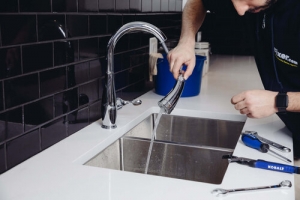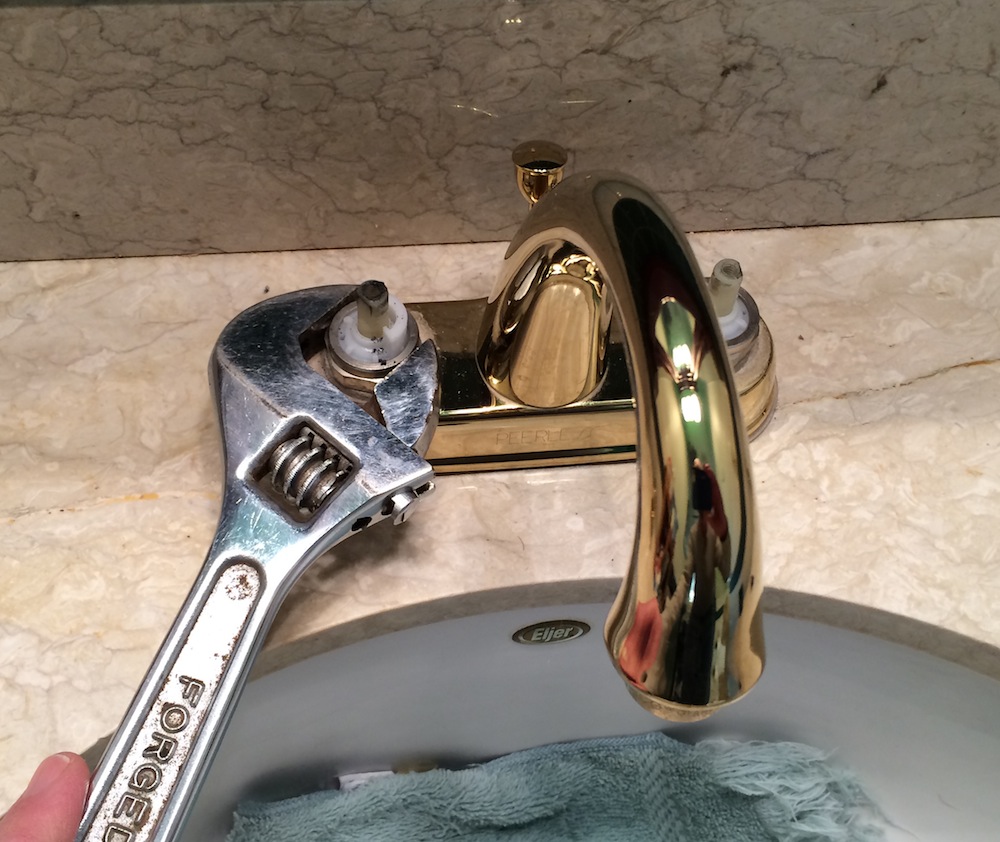Motives Why It's Important to Repair a Dripping Faucet
Motives Why It's Important to Repair a Dripping Faucet
Blog Article
We have uncovered this article pertaining to Why Are My Faucets Dripping (And Can I Fix It Myself)? directly below on the web and accepted it made good sense to quickly share it with you over here.

Dripping faucets might look like a minor hassle, but their effect exceeds simply the inconvenience of the sound. From wasting water to sustaining unneeded financial costs and health and wellness risks, disregarding a dripping tap can bring about numerous effects. In this short article, we'll look into why it's crucial to address this usual house problem without delay and efficiently.
Wastefulness of Water
Environmental Impact
Leaking taps contribute considerably to water wastefulness. According to the Environmental Protection Agency (EPA), a single faucet dripping at one drip per second can throw away more than 3,000 gallons of water annually. This not only strains water sources but additionally affects communities and wildlife based on them.
Step-by-Step Overview to Repairing a Dripping Tap
Tools Required
Prior to attempting to deal with a trickling tap, gather the necessary tools, including an adjustable wrench, screwdrivers, replacement parts (such as washing machines or cartridges), and plumber's tape.
Common Tap Issues and Their Solutions
Identify the sort of tap and the particular concern causing the drip. Typical troubles include worn-out washers, corroded valve seats, or damaged O-rings. Refer to producer directions or on-line tutorials for step-by-step guidance on repair services.
Financial Prices
Raised Water Costs
Past the environmental impact, dripping faucets can inflate water costs considerably. The gathered waste over time converts right into higher energy expenses, which can have been avoided with prompt repair work.
Possible Residential Property Damages
Furthermore, extended leaking can bring about harm to components and surface areas bordering the tap. Water buildup can cause discoloration, deterioration, and even structural problems if left ignored, resulting in additional repair expenses.
Health Concerns
Mold And Mildew and Mildew Development
The constant visibility of wetness from a leaking tap produces an optimal atmosphere for mold and mold development. These fungi not only compromise indoor air quality yet also position wellness dangers, specifically for individuals with respiratory system conditions or allergies.
Waterborne Diseases
Stagnant water in trickling faucets can come to be a breeding ground for germs and various other virus, increasing the threat of waterborne diseases. Contaminants such as Legionella germs prosper in stationary water, possibly bring about serious illnesses when ingested or inhaled.
DIY vs. Expert Repair work
Pros and Cons of Do It Yourself Repair Work
While some may attempt to fix a dripping tap themselves, do it yourself repair work come with their own collection of difficulties. Without proper knowledge and devices, do it yourself attempts can exacerbate the concern or cause incomplete fixings, extending the issue.
Advantages of Working With a Professional Plumber
Employing a specialist plumber makes sure that the underlying root cause of the leaking faucet is attended to effectively. Plumbing professionals possess the know-how and equipment to identify and fix tap issues effectively, saving time and decreasing the threat of further damages.
Ecological Obligation
Private Contribution to Conservation
Taking obligation for taking care of leaking taps straightens with broader initiatives toward water conservation and environmental sustainability. Every individual's actions jointly make a substantial influence on protecting valuable resources.
Lasting Living Practices
By focusing on timely repair work and adopting water-saving behaviors, people contribute to lasting living methods that benefit both existing and future generations.
Safety nets
Routine Maintenance Tips
To avoid dripping taps, carry out regular upkeep such as cleansing aerators, checking for leaks, and changing damaged parts immediately. Additionally, think about installing water-saving gadgets or updating to more effective components.
Importance of Prompt Repair Works
Resolving dripping faucets as quickly as they're seen prevents further water waste and possible damage, eventually saving both water and money over time.
Influence On Residential Property Worth
Assumption of Well-Maintained Residential Or Commercial Property
Maintaining a home in good condition, including dealing with maintenance issues like dripping taps, boosts its viewed worth and charm among potential customers or occupants.
Influence on Resale Worth
Properties with well-kept plumbing fixtures, consisting of faucets, command higher resale values in the real estate market. Attending to dripping taps can contribute to a favorable impression throughout residential property evaluations and arrangements.
Conclusion
Attending to a trickling tap goes beyond mere benefit; it's an important step towards saving water, lowering economic prices, and safeguarding health and residential or commercial property. Whether through DIY repair work or expert assistance, acting to deal with trickling taps is a little yet impactful method to advertise liable stewardship of resources and contribute to a healthier, a lot more sustainable future.
How to Fix a Dripping or Leaky Faucet
A leaking faucet is one of the most common problems that homeowners encounter, but it being commonplace doesn’t make it any less annoying. The constant drip drip drip of a leaking bathtub faucet, showerhead, or sink tap can disturb your home’s serenity. Left neglected, a dripping faucet can also result in higher water bills and discoloration or mold growth in your sink or plumbing fixtures.
Fortunately, you don’t have to be a trained plumber to know how to stop a dripping faucet. With some basic tools, replacement parts, and a little patience, leaky faucet repair is a breeze. In this article, we’ll explain what causes dripping faucets and how you can fix them.
What Causes a Leaking Faucet?
Kitchen and bathroom faucets come in all manner of designs, but most involve some combination of valves, O-rings, seals, and washers. The O-ring is usually the weakest link, but any one of these pieces can wear down over time. Heat, moisture, temperature fluctuations, minerals, mold, and movement can contribute to warping and corrosion, breaking the watertight seal. This just comes with the territory of being a homeowner. Everything is always subject to wear and tear, and some component parts of your appliances and fixtures need to be replaced on occasion. At least replacement O-rings are cheap!
More rarely, dripping faucets can be a symptom of excessively high water pressure. Were this the case in your home, you would probably notice that the leak is not isolated to one faucet. Water pressure issues are harder to resolve on your own. We recommend contacting a professional plumber if you suspect your water pressure is too high.
How to Fix a Dripping Faucet
Pipe wrench or monkey wrench Allen wrench set Screwdrivers Old towel or rag Shut off the water.
Before you do anything, you need to turn off the water to keep from drenching your kitchen or bathroom. You should find a valve under the sink and against the wall. Once you’ve turned this valve, try turning the faucet on to confirm that the water source has been cut off.
If you can’t locate your local valve for the faucet you’re working on, you can always shut off the water to the house at the main valve. Of course, this will prohibit anyone from using the sinks, showers, or toilets while you’re working on the faucet that’s giving you trouble.
Plug or block the drain.
You’ll be disassembling the faucet and removing some small bits of hardware. Plug the drain with a stopper or rag to avoid the possibility of a small screw falling into your P-trap.
Take apart the faucet assembly.
There are several varieties of kitchen and bathroom faucets, each with its own manner of assembly. For detailed instructions on how to disassemble your faucet, you can refer to the fixture’s manual or contact the manufacturer. If you know whether you have a ball, disc, cartridge, or compression faucet, you can find detailed schematics online.
In general, you need to begin by removing the faucet handles. You might notice a small screw that you’ll need to remove with a screwdriver or Allen wrench. If you don’t see any visible securing hardware, it’s likely hidden under a decorative cap that can be unscrewed or popped off with flathead screwdriver.
Remove each piece methodically, consulting a schematic when necessary. Take notes or arrange the pieces in such a way to make it easier to correctly reassemble the faucet later.
Remove the cartridge.
Once you’ve removed the handles and securing hardware, you should be able to remove the valve cartridge or stem. Some cartridges will slide right out. Other faucet models will require you to loosen a nut with a pipe wrench before you can remove the valve stem.
Examine the exposed hardware.
With the cartridge or stem removed, inspect the component parts. Check the rubber O-rings for wear and tear. Also examine the seat washer for corrosion or other damage. These pieces are usually the responsible parties for a dripping faucet, but it’s worth inspecting the other component parts while you have the faucet disassembled.
Find replacement parts.
Once you’ve identified which faucet component has failed, find an identical replacement. Your local hardware store should have O-rings, seat washers, and other standard components in stock. If you have a luxury or uncommon faucet, you may have to contact the manufacturer for a replacement part.
It’s a good idea to take your old parts with you to the hardware store so you can compare them with the store’s inventory and be sure you’re purchasing the correct replacement.
Reassemble the faucet.
With your new parts in hand, reconstruct the faucet and handles. Don’t be tempted to overtighten screws or nuts. You might think this could create a better seal, but it can instead damage or bend a delicate part of the assembly and create a new problem for you.
Turn on the water and test the faucet.
The only thing left to do is test your work. Unplug the sink, turn the water back on, and try the faucet. Congratulate yourself on a job well done!
https://www.libertyhomeguard.com/how-to-fix-a-dripping-or-leaky-faucet/

As a keen person who reads about Should I Repair or Replace a Leaky Faucet?, I imagined sharing that excerpt was worth the trouble. Sharing is nice. Helping others is fun. Many thanks for your time spent reading it.
Report this page